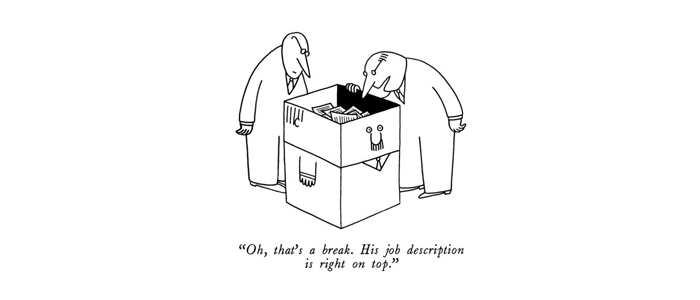
Do you have a job description? And if you do, when did you last look at it? In this article we look at why you need to re-design it and show you how to do it.
If you have a job description, it’s likely that: –
- You’ve not looked at it recently
- It’s a long list of activities, or alternatively broad statements saying what you’re responsible for in your job
Job descriptions like this are concerned with activity rather than output. They fuel a culture of ‘hard work’ and long hours. They don’t focus on the results people are accountable for producing.
If this is the case in your organisation, then it’s likely you have a culture where you’re trying to do too many things at once.
You never have time to think strategically, only responding to (rather than initiating) events, and you’re constantly fire-fighting. The result is long hours, stress, tiredness, lack of satisfaction, irritability – you know what it feels like.
If you have a job description that focuses on output and accountability the emphasis changes. You’re back on the front foot.
This is really important, because otherwise at senior levels of management you can end up with teams of people working extremely hard, but not producing the required results.
You do what you believe you’re good at, what you like doing, or if all else fails, the most urgent thing on your list!
How do you re-design a job description?
- Don’t do it in isolation. Always use an outside facilitator. Get the team together and take one job at a time.
- As a starting point use the job description and the lists of areas of responsibility and activities.
- Group these activities into themes.
- Question among yourselves what the output of each group or theme is.
- Work together on each statement of output until you are all satisfied that it expresses exactly what the job is there to deliver.
- The number of outputs for each job should be no more than six, and you need to come up with four or five metrics which measure the success of each specific outcome.
Once you have re-designed your job you will describe it differently. Here’s an example:
“I’m accountable for producing profitable new business, a motivated high-performance team, an efficient, best-practice business operation, and satisfied & delighted clients.”
You will know exactly how each of these areas are measured and track your performance against each measure without having to look it up in your job description.
If this process is done with rigour and focus it will transform the way you work. It will radically change the way you view your job and those of your colleagues. You end up with a ‘mental map’ of your own role as well as that of the team.
Have you enjoyed this article? Click on the graphic below to receive more of the same:



About The Author: Amanda Baines
Amanda has a passion for turning ‘average’ into ‘excellent’. She delivers outstanding results through her dynamic coaching, consultancy and facilitation, producing organisations which maximise everyone’s potential and in which everyone plays to their strengths.
More posts by Amanda Baines